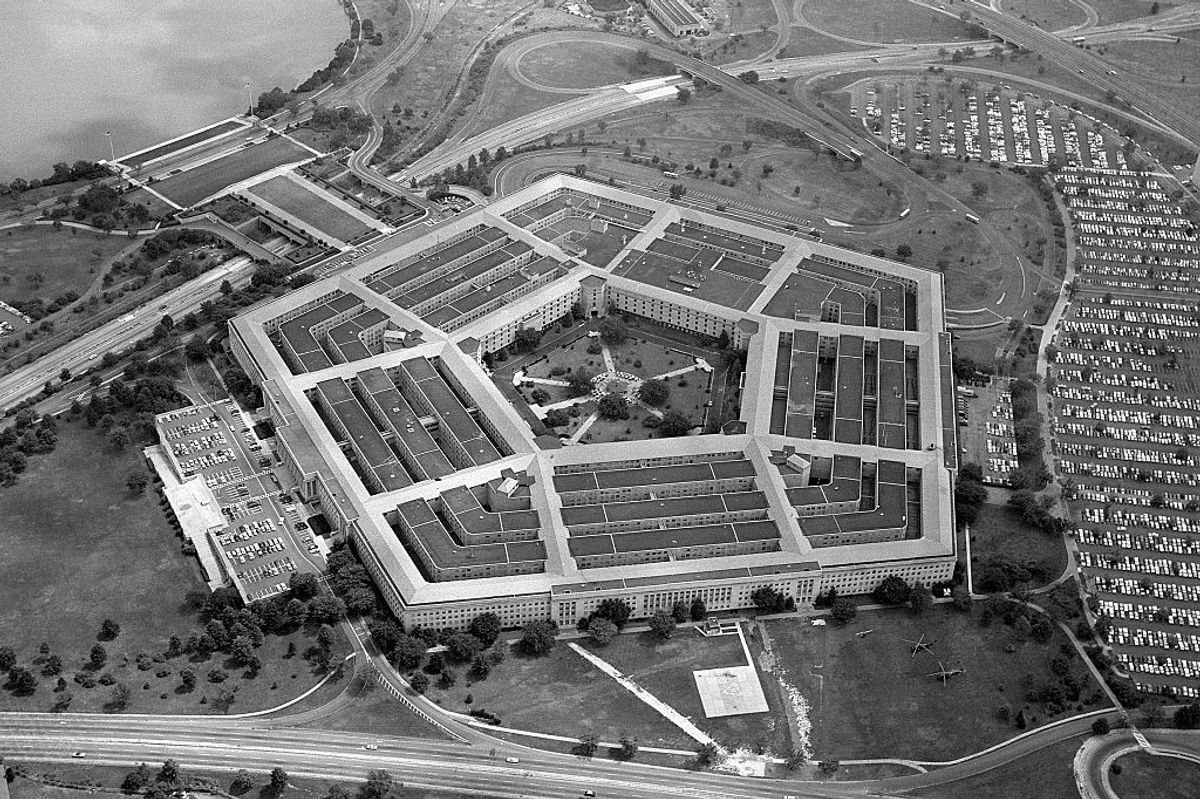BOTTOM LINE UP FRONT: The potential of quantum is unquestioned, and far-reaching. It could create unbreakable encryption (and render current encryption methods useless), propel advances in artificial intelligence, and even accelerate the development of drugs and medical treatments. That broad sweep of possible outcomes explains why investments are pouring into the field from around the globe. And as governments and companies announce new initiatives and strategies for quantum, especially intense is the R&D taking place in three sectors – quantum computing, sensors, and communications.
THE BIG QUESTIONS: As the global race for quantum breakthroughs intensifies, what will be the impact on economies, national security, and life on the planet? Who will, and who will not, benefit economically from quantum advances? And what is the potential for world powers to enter into an unprecedented era of “quantum warfare”?
THE CONTEXT
- Underlying the anticipated benefits of quantum are worrisome and unresolved issues about just how innovations will be used. The threat to existing cryptography systems is foremost among these concerns, and is driving efforts to both “harden” current data repositories and to devise new generations of quantum-enabled encryption.
- Around the world, public spending last year on quantum technologies was estimated at more than $30 billion. By itself, China made up roughly half of that total with the EU making up almost another quarter. The balance of public spending was shared by the United States, Britain, Canada, and Japan. Equally important is the scale of private investment, led by the U.S. and EU, each of which has 59 and 53 quantum computing startups, respectively.
- In 2018, the U.S. launched the National Quantum Initiative, a national plan with funding of $1.2 billion to develop quantum computing as well as a framework for government entities to sponsor quantum research. As part of the Initiative, the Department of Energy earmarked $625 million to establish quantum information research hubs between 2020-2025. President Biden in May 2022 issued a National Security Memorandum to bolster U.S. leadership in quantum computing and mitigate risks to cryptographic systems.
- In January, the World Economic Forum (WEF) meeting in Davos released a report, “The World Is Heading for a 'Quantum Divide'. Noting that 17 countries have invested in national quantum technology programs while more than 150 have not, the WEF warned against quantum exclusivity that will further exacerbate digital weaknesses in the developing world. The WEF commended Israel and Singapore as small countries with limited resources that nonetheless are developing robust “quantum ecosystems.”
- Military and intelligence quantum applications are of keen interest, and promise. Key areas of development include sensors, navigation, radars, communications, and electronic warfare systems. In the near term, no field is more important than post-quantum cryptography implementations, regarded broadly as the ‘must-have’ technology to protect a nation’s most sensitive security and economic data.
THE EXPERTS
The Cipher Brief tapped experts Edward Parker and Arthur Herman for their insights on the future of quantum technologies. Interviews have been lightly edited for clarity and length.
Edward Parker, Physical Scientist, RAND Corporation
Edward Parker studies the societal impact of disruptive technologies, and focuses research on emerging quantum technologies, artificial intelligence, and cybersecurity. He serves as a peer reviewer for the physics journals, Quantum Science and Technology, the European Journal of Physics, and Statistica A.
Arthur Herman, Senior Fellow, Hudson Institute
Arthur Herman is a senior fellow and director of the Quantum Alliance Initiative at Hudson Institute. His research programs analyze defense, energy, and technology issues. He is the author of nine books, including The New York Times bestseller, How the Scots Invented the Modern World.
EXPERT Q&A
The Cipher Brief: Computing, sensing, and communications are often cited as key areas of quantum research. Of these, which do you think has the potential to be the most transformative, and in what ways? And which field is likely to be first to yield real-world applications, including commercial and industrial uses?
Parker: It depends on the time frame. Within a 5- to 10-year time frame, I think that quantum sensing will be the most transformative, because that technology is closest to readiness. I think that biomedical applications – e.g. lightweight devices for non-invasive brain scans – could be ready sooner. There are many, many possible commercial and industrial applications of quantum sensing, and it’s very difficult to say right now which ones will prove useful. For example, using gravimeters and accelerometers for oil prospecting, surveying ground quality before construction, seismography/earthquake detection, detection of nuclear material, and underground tunnel detection (that last one has been demonstrated in the field).
Another big class of applications is positioning and navigation without needing GPS – e.g. for autonomous vehicles driving through underground tunnels where there’s no signal.
Another category of quantum sensor is very sensitive and tunable-frequency radio antennas, which could be useful for communication in areas with lots of spectrum interference.
Over the longer term, quantum computing has the potential to be the most transformative. We’re still a very long way from quantum computers that are powerful enough to execute the most powerful known algorithms, and there are still a lot of unknowns about just what kind of computations quantum computers will be useful for but broadly speaking, scientific simulation (e.g. biochemistry, materials modeling, and drug discovery) seems very promising.
There are many other challenging mathematical problems, such as optimization, that quantum computers may be able to tackle more efficiently than existing supercomputers. This could have applications in logistics and aerodynamic modeling, among many other areas.
Most famously, quantum computers may eventually be able to factor large numbers, which would allow them to quickly break most existing encryption systems. That capability would be the most destabilizing application of all. Although quantum sensors could deliver upgraded capabilities over existing sensors, quantum computers might deliver fundamentally new capabilities. But those truly groundbreaking applications are still probably at least 10 years out. The existing hardware just isn’t there yet, nor is it particularly close. There may be more niche applications in the nearer term, though.
Quantum communications is an interesting case. One particular capability, “quantum key distribution” for secure communications, has been commercially deployed since 2007, and China has already laid down a huge national network that employs this capability. But many experts – including the National Security Agency – are skeptical about the real-world utility of QKD. I think it’s still a very open question whether any U.S. industries will ever adopt QKD at scale, but some banks are already looking into it. Over the longer term, most people agree that the true potential for quantum communications is for distributing entanglement, which would allow quantum computers or sensors to be networked together. But that capability is still many years out.
Herman: Without a doubt, quantum computing has the most transformative potential, in everything from discovering new drugs, redesigning the use of modeling at the sub-molecular level, and solving previously insoluble math problems—including of course everyone’s big worry, factorizing the large prime numbers that undergird public encryption systems.
We are still a long way from these transformations taking place, thanks to the challenges of engineering qubit entanglement, the physical basis for quantum computing. Quantum sensing offers similar amazing possibilities, such as exploration for oil and gas and other minerals, GPS-free navigation, and weather prediction; some establish the sensing market might be as large as $300 billion by 2025.
We are still far from sensing being a viable commercial venture. Quantum communication, on the other hand, meaning using entanglement-based technology to send and receive messages, is already a commercial practice for companies here in the US as well as Europe. The potential for using entanglement-based communication such as Quantum Key Distribution to protect highly sensitive data or crucial industrial systems, is very real. It may be quantum communication that gets first out of the gate, as a commercial and industrial use case.
The Cipher Brief: The U.S., China, and EU have all announced major initiatives related to quantum technologies. What are the similarities among these national strategies, and where do they differ? At this point, are there clear leaders in specific quantum areas? What is the nature of government-private sector collaboration among the leading nations?
Parker: Broadly speaking, they’re all fairly similar. All three groups have announced that they see quantum technology as a strategic priority and have authorized over a billion dollars over the next several years. All three plan to research computing, communications, and sensing, and have not publicly identified many more-specific areas of particular promise or focus. One notable difference is that the U.S. government, through the NSA, has publicly announced that it does not anticipate adopting quantum key distribution in national security systems, which takes the only near-term application of quantum communications off the table from a government-adoption perspective.
There is a big structural difference between the R&D bases in the U.S. and China. In the U.S., private industry is currently advancing the state of the art in quantum technology (although academic research still plays a big role as well). The most advanced U.S. quantum computer prototypes by far are operated by companies. But the private industry in China is a tiny fraction the size of the U.S.’s, and most cutting-edge Chinese research in quantum is done in universities and national laboratories – particularly the Hefei National Laboratory for Physical Systems at Microscale, although many Chinese universities are also very strong. Unsurprisingly, the Chinese quantum R&D system is much more centralized and top-down than the U.S. system. The European system is more similar to the U.S. system overall, but there are fewer startups and relatively more of the research is performed in universities.
In terms of technology leadership, I would say that the U.S. is still the clear world leader in quantum computing, although China is catching up and has recently reached rough parity within certain technical approaches. It’s less clear whether the U.S.’s lead is wide or narrow. China is currently the world leader in quantum communications technology, although they have focused a lot of resources into QKD, which is an application that the U.S. government does not consider particularly promising. But they have also demonstrated some impressive capabilities in entanglement distribution, which sets the stage for next-generation applications. Sensing is more difficult to evaluate, but I would say that the U.S. and E.U. are both strong in that area (and are both probably ahead of China).
Herman: Right now, China is the clear leader in quantum communication, although Europe is surging to catch up, and the U.S. is the clear leader in quantum computing, with China surging to catch up.
In the case of Europe and China, governments are clearly taking the lead in investing in quantum technology, and deciding which kind to pursue—in China’s case, according to WEF figures, almost 15 times more than the U.S. government.
In the United States’ case, private companies like IBM, Google, Microsoft, and Honeywell— have been left to take the lead; the exception being post-quantum cryptography to protect against future quantum computer attacks, where the USG has been steering course, one might argue almost over steering in regard to the advantages of PQC versus quantum cryptography.
Overall, I would say that the U.S. strategy of letting private industry lead in investment and innovation, has paid off until recently. Now it’s going to be more difficult for the US to maintain a quantum tech lead unless it has an overall quantum investment strategy aimed at dominating the future commercial market as well as protecting national security interests.
Especially since innovation in the first, will yield fruit in the second.
As a Cipher Brief Subscriber+Member, you have access to a virtual briefing on Monday, February 20th at 9:30a ET with NATO Assistant Secretary General for Intelligence and Security David Cattler - as the organization takes on Russia over Ukraine and undertakes new efforts to protect critical undersea infrastructure.
Subscriber+Members receive invitations to register via email.
Please join us.
The Cipher Brief: Military and intelligence applications of quantum research include sensors for position, navigation and timing (PNT); ultra-secure data communications, and cryptographic and decryption computing applications. What are the obstacles to deployment of these technologies, and can a rough timetable be established for their introduction and use?
Parker: I’m hesitant to make concrete predictions about timelines, given the huge uncertainties in the technology. But in 2019, the Defense Science Board estimated that advanced applications of next-generation atomic clocks could become viable within 5 years, while PNT applications could become viable within 10 years, which sounds plausible to me. We’ve already demonstrated good enough quantum sensor sensitivity in the lab, but the challenge is miniaturizing quantum sensors and making them rugged enough for deployment in the field.
The NSA does not plan to adopt quantum systems for the specific goal of secure communications – so unless that policy changes, the U.S. military will not be adopting quantum key distribution (which also still faces many technical limitations, such as short range and low data rates).
Quantum decryption is a very real threat, but it requires enormous hardware resources. A National Academy of Sciences expert consensus report said that it’s very unlikely that quantum computers will be capable of decryption before 2030 at the earliest, and I agree with that assessment.
Herman: The chief problem is interference from outside sources, that disrupt the flow of entangled photons that make quantum sensing possible, i.e., measuring minute variations in the gravitational field in order to detect objects, even those hidden deep in the ground.
Sensing in space, i.e. with far less interference, will be the first major breakthrough in the use of quantum sensing for national security and defense purposes. Yet the United States is still a long way from launching a quantum satellite, that can test entanglement in space.
As for data communication, the US lags behind China and Europe, as noted earlier.
It is difficult to know where the Pentagon and National Security Agency is on development of a cryptographically relevant quantum computer, as they term it; some suspect that China may be closer than we have assumed. I’ve written about this in my Forbes columns on “Q-Day” and China and the Quantum Barrier.
Either way, the Biden administration has been doing the right thing this past year, in mandating timelines for deploying quantum-resistant cryptography, to protect national security-sensitive data and networks. I’d like to see the administration take a similar lead in protecting our financial infrastructure, and transportation networks like airlines.
The Cipher Brief: What theoretical, practical, and physical issues need to be addressed in order to realize the promise of quantum technologies?
Parker: There are all kinds of technical challenges. For sensors, the biggest challenge is miniaturization and ruggedization. For computing and communications, the biggest challenge is improving “quantum error correction.”
Today’s quantum systems are extremely delicate and unstable, and they lose their ability to utilize quantum effects within a fraction of a second of being initialized, because environmental noise quickly creates errors that corrupt the information processing. There are known methods for solving this problem, and the theory of quantum error correction is pretty well-understood. But implementing quantum error correction in practice is a very challenging engineering problem. So far, I would say that we’ve demonstrating promising first steps on very small systems, but nothing that is yet ready to scale up to the large sizes that will be necessary for transformative applications.
Herman: The big breakthroughs ahead come with solving engineering problems, i.e., qubit entanglement and interference-free entanglement communication links; the scientific challenges are essentially behind us. Advanced materials development, that can help to preserve photonic teleportation over longer distances without interference or decoherence etc, are on their way. But it’s the engineers, who hold the future of quantum technology in their hands.
The Cipher Brief: How might quantum research and applications enhance artificial intelligence and machine learning?
Parker: That’s still highly speculative. There have been a few proposals for quantum algorithms for ML, but after further research, some of them have subsequently been found to not actually be much faster on a quantum computer than on a regular computer. I would say that the prospect of quantum computing to improve AI/ML looks somewhat less promising today than it did a few years ago. There some promising ideas for using quantum computers to improve AI/ML, but unlike with factoring and decryption, no one has yet proposed a full “end-to-end” quantum computing machine learning algorithm that we can confidently say would surpass our existing computers’ AI/ML capabilities.
Herman: These will be the biggest breakthroughs of all. Our last QAI report explained how the old idea, which is not that old, that quantum computers will replace their digital predecessors with a new Post-Digital Age, is wrong. Instead, quantum technology will be imbedded in existing digital systems, e.g. supercomputers, in hybrid ways that will dramatically enhance their performance, e.g. in making optimization modeling faster and more accurate. That includes AI/ML applications; the entire basis of AI/ML is growing sophistication in pattern recognition, which a quantum component can speed up in breathtaking ways.
The bottom line is, we’ve only seen the beginning of AI’s dominance. When its capabilities are yoked to those of quantum computers, the transformations will be stunning. And vice versa: the use of AI/ML to solve problems for quantum engineering, will have a decisive effect on the development of quantum computers, and quantum sensing and quantum communications; the entire spectrum of quantum information science.
Then comes take-off, i.e. when quantum computers can be used to design the next generation of quantum computers, including of course accelerating their decryption potential. So watch out! The next twenty years are going to be the Golden Age of quantum technology, with developments we can only begin to guess at.
Cipher Brief Senior Editor Ken Hughes contributed to this report.
Read more expert-driven national security insights, perspective and analysis in The Cipher Brief















